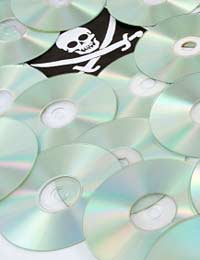How to Spot Counterfeit Memorabilia

Let's face it, there's a lot of fake music memorabilia out there. If there's money to be made, someone will create a counterfeit to make a profit. That means some poor unfortunate is going to be scammed and end up with an item in their music memorabilia collection that's not worth a penny.
However, there are things you can do to avoid being a victim. You need to be aware of a few things and take some simple precautions when it comes to collectibles. Do that and you can avoid all but the most organised and sophisticated scam.
Basic Things To Remember About Memorabilia
There's only so much music memorabilia out there. It might seem obvious, but it's worth remembering. The further back in time you go - to the 1950s, for instance, or even further - the less you're going to encounter, simply because so much has been lost. So if someone offers you music memorabilia that's purportedly old, that should raise your suspicions at once.Truly rare collectibles, such as John Lennon's clothing, for example, will go to auction and fetch very high prices (the same is true with instruments owned by important musicians). But those collectibles will have provenance, a history that shows it belonged to the person in question. If you're offered items like this without provenance, just keep on walking.
Fake Memorabilia Posters
Some people have made a good living offering reproductions of old concert posters online. Many are the old "boxing style" posters used often during the 1950s and 1960s (as well as earlier). Any originals that survive (and it's not impossible that a stash could still be discovered somewhere) would be worth a fair amount, and not be in great condition. You'll find this type of music memorabilia mostly sold on online auction sites, and they really aren't even worth the postage costs as collectibles.Things become a little more complex when it gets to the psychedelic posters of the 1960s. These are still very collectible and popular memorabilia, commemorating a golden age of music, and many went into second and third printings. In order not to be scammed, you need to familiarise yourself with the differences between printings on specific posters (they're usually documented). Buying from a reputable dealer helps, too.
Counterfeit Signed Items
There's nothing easier than faking someone's signature on an LP cover or a piece of paper and passing it off as an autograph. It happens all the time. There's no certain way to make sure you're not a victim, other than having a cast-iron provenance on the signed item, including a check by an expert, or buying from a dealer who's UCC approved, and therefore generally above suspicion.Buying Memorabilia In Online Auctions
One of the main markets for music memorabilia these days are online auctions. By its very nature, though, it's impossible to be sure of the items you're buying, since they're not physically present. If you're considering buying a piece of memorabilia or a collectible this way, proceed very cautiously. Don't be afraid to email the seller and ask plenty of questions. If the items are signed, only deal with UCC approved dealers.You should also check the seller's feedback very carefully for any criticism or negative comments. If you have any doubts whatsoever, it's best to hold off you're the safety of your wallet and your music memorabilia collection.
- Collecting Foreign Memorabilia
- Should You Collect Reissued Vinyl?
- New Music Memorabilia
- Collecting Different Recorded Formats
- Sheet Music: Is it Memorabilia?
- Collecting Old Vinyl
- How to Buy it
- Are Music Magazines Classed as Memorabilia?
- What Rock Memorabilia Should You Collect?
- Music Memorabilia by Region
- Are Music Books Memorabilia?
- Signed T-shirts and Other Items/Things
- British Blues Memorabilia
- Memorabilia to Invest In 2000 & Onwards
- Why Collect Memorabilia?
- Who Collects Memorabilia?
- The Big Players
- Auction Houses
- eBay
- How do You Know it's Real?
- How to Sell it
- Provenance
- What is Rock Memorabilia?


Re: Take That Memorabilia
I have a take that mood ring from the 90s!
Re: Take That Memorabilia
I have a signed by all members take that and party 1st album I gaining the 90’s what’s the value ? Thanks
Re: 1970s Autographs
Ik heb een litho van Elton John incl. handtekening. Ik ben benieuwd wat de waarde momenteel is en waar ik hem zou kunnen verkopen. Ben al lang…
Re: 1970s Instruments
hi
Re: Take That Memorabilia
I have a Take That personalised signed poster with all 5 members on it. Can you advise how much it may be worth please?
Re: Oasis
I have an oasis frustration board game, box has a small dent though. And an original stop the clocks artwork print signed by the whole band. I wondered if…
Re: 1960s Instruments
i aehglhgjlbzvjblwehfoweh;oieh ehauh dijvaslknbjgaebufbau ncjnurngaouhlfuburibuhfuih uhslmfi jciuhuhihfihf uerahfiuerh urhiuehuhfu…
Re: Take That Memorabilia
I have a German Gold award to Gary Barlow dated Sept 1994 for Take That Everything Changes. Presented by BMG Bideo. In the original frame.…
Re: Take That Memorabilia
I have a box of Take That memoribilia from the 1990s. 12 inch and 7 inch records, cassettes, posters, items from the fan club and a host of…
Re: 1980s Tickets and Passes
Hi: I am a pro rock journalist with a huge collection of backstage passes from the '80s and '90s for sale. The collection includes…